SICK LED strips, modules, profiles and accessories

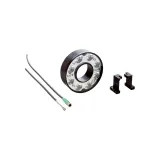
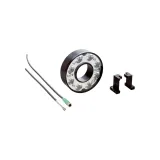
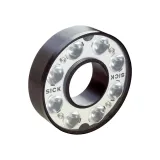
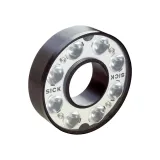
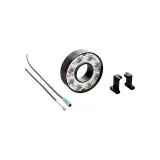


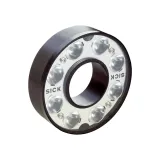
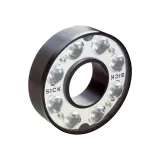
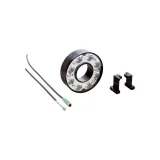
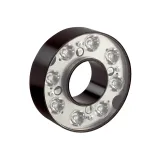
sick led strips and modules for machines, enclosures, and signage
Compact light engines that cut install time and hold color over long runs. Strips ship on reels with defined cut-points; rigid boards arrive in standard lengths for gear trays and machine doors. Most projects run 24 V DC for safer distribution and lower copper losses; 12 V variants exist for short loops and legacy PSU stock. Installers get consistent pad spacing, polarity marks, and connector options that don’t fight with gloves.
Product range and series overview
Output classes span ~600–2 000 lm per meter on flexible tape and up to 3 000–4 500 lm per 560–600 mm rigid board. Pitch options (60/120/180 LED/m) balance uniformity against power density; high-pitch lines remove scalloping in shallow profiles. Color sets include 2700/3000/3500/4000/5000/6500 K, CRI 80 as a base with CRI 90 where finishes and food presentation matter. Tunable-white and single-color (red/green/blue/amber) modules support status backers and machine viewing windows. IP20 reels serve cabinets and interiors; coated or encapsulated IP65/IP67 types handle splash zones and humid shafts.
Technical specifications and standards
Electrical: 24 V DC typical (tolerance 22–26 V), constant-voltage rails with per-segment current limiting. Power densities 4–20 W/m; design voltage drop under 5 % to keep ends on the same dimming curve. Photometric: efficacy 120–190 lm/W (CRI/CCT dependent); SDCM ≤3 for visual consistency. Thermal: keep LED tc ≤85–90 °C for L80 50–60k h; rigid boards publish higher tc margins thanks to thicker copper and direct-thermal paths. Coatings use UV-stable resins that don’t yellow under 400–500 nm. Compliance: modules to EN 62031; safety/EMC with the selected driver to IEC/EN 61347 and EN 55015; luminaire builds under IEC/EN 60598. Lifetime projections reference LM-80 data with TM-21 extrapolation. Flicker: specify PstLM ≤1.0 and SVM ≤0.4 at maintained levels in display or camera spaces.
sick led profiles for clean lines and thermal control
Extruded aluminum channels with snap-in opal or micro-prismatic diffusers set beam spread, hide dots, and pull heat out of the strip. Surface, recessed, corner, and T-slot adapters cover cabinets, conveyors, and machine frames. For enclosed runs above 12 W/m, favor deep sections with ≥1.2 mm wall and continuous substrate contact; thermal pads improve interface. Opal covers control UGR in work zones; clear lenses deliver maximum punch over distance.
sick led linear modules optics and drive choices
Rigid boards accept clip-on lenses (30×90° aisle, 60° punch, 120° wide) and run on constant-current or constant-voltage drivers depending on topology. With CC drivers, string lengths are fixed—simplifies current sharing and extends life in hot bays. With CV drivers, parallel segments simplify field service; size feeders so the last board still sees the target voltage. Interfaces: ON/OFF, 1–10 V, DALI-2; PWM control only where flicker limits are documented.
sick aluminium profiles channels, covers, and heat paths
Profile families share hole geometry for bracket reuse and offer anti-twist clamps for vibration. Choose clear/opal/polycarbonate lenses by impact and chemistry; PC wins where cleaning is aggressive. End-caps with compression glands keep IP after service; corner and recessed trims finish visible joinery. Publish torque values for lens screws—over-tightening warps the diffuser and shows as banding.
sick led mounting accessories that speed first fix
Pre-cut tapes, corner connectors, click-in board clips, spacer shims, and captive-screw end-caps reduce lift time. Push-in feed blocks accept 0.5…1.5 mm² with ferrules; right-angle adapters keep lids flat in shallow profiles. For multi-meter runs, feed from both ends or mid-tap; label feed direction on the drawing so crews don’t chase dim tails.
Applications and compatibility
Machine doors and guards: rigid boards with narrow optics avoid glare on glass and push lux onto the work. Control cabinets: low-power strips with opal covers illuminate terminals without hotspots. Conveyors and racking: high-pitch reels in deep channels deliver uniform pick-face lighting. Hospitality and retail: CRI 90 with opal lenses for diffuse coves; tunable-white tracks lobby ambience from day to night. Outdoor soffits: encapsulated tape in sealed profiles with drain paths and stainless hardware. For bends under 50 mm radius, select sick flexible led strips and route on smooth substrates—no hard corners.
Integration with other brand products
Drivers and sensors share the same installation discipline as SICK luminaires and panels: segregate SELV from mains with divider trunking, land shields with 360° clamps at entry plates, and publish min-/max-setpoints for dimmers in the handover pack. Use pre-terminated jumpers from the connection catalog to avoid field soldering. When building kits, include labels and ferrules from sick lighting accessories so maintenance can trace circuits without opening profiles.
Selection criteria for B2B clients
Start from maintained lux and geometry, then pick pitch and diffuser to hit uniformity. Choose CRI/CCT by area (CRI 90 at QA benches, 4000–5000 K for task, 2700–3000 K for rest spaces). Cap W/m to keep tc inside rating—more extrusion and more feed points beat pushing a single hot run. For long lines, budget voltage drop and surge—fit 1–2 kV protection at drivers on long feeders. Document control type (1–10 V or DALI-2) and dimming curve; mixing PWM and analog control on one zone invites flicker complaints. On machines, lock profile section and lens type across cells so spares stay lean.
Advantages of working with Bankoflamps
We align strip pitch, profile section, lens, and driver interface to your room or cell schedule, then show live EU stock before lifts or shutdowns are booked. Quotations land in roughly an hour with EAN/MPN so CCT, CRI, W/m, optics, and accessory packs don’t drift between phases. Your portal lists lead times, shipment progress, and downloadable price files; pricing windows track project gates. Approved accounts can use post-payment up to 30 days. We consolidate by zone to cut freight and night work, and your account manager cross-checks feed topology, voltage drop, tc margins, IP class, mounting geometry, and connector sets against your drawings—so cartons arrive site-ready and crews light once.